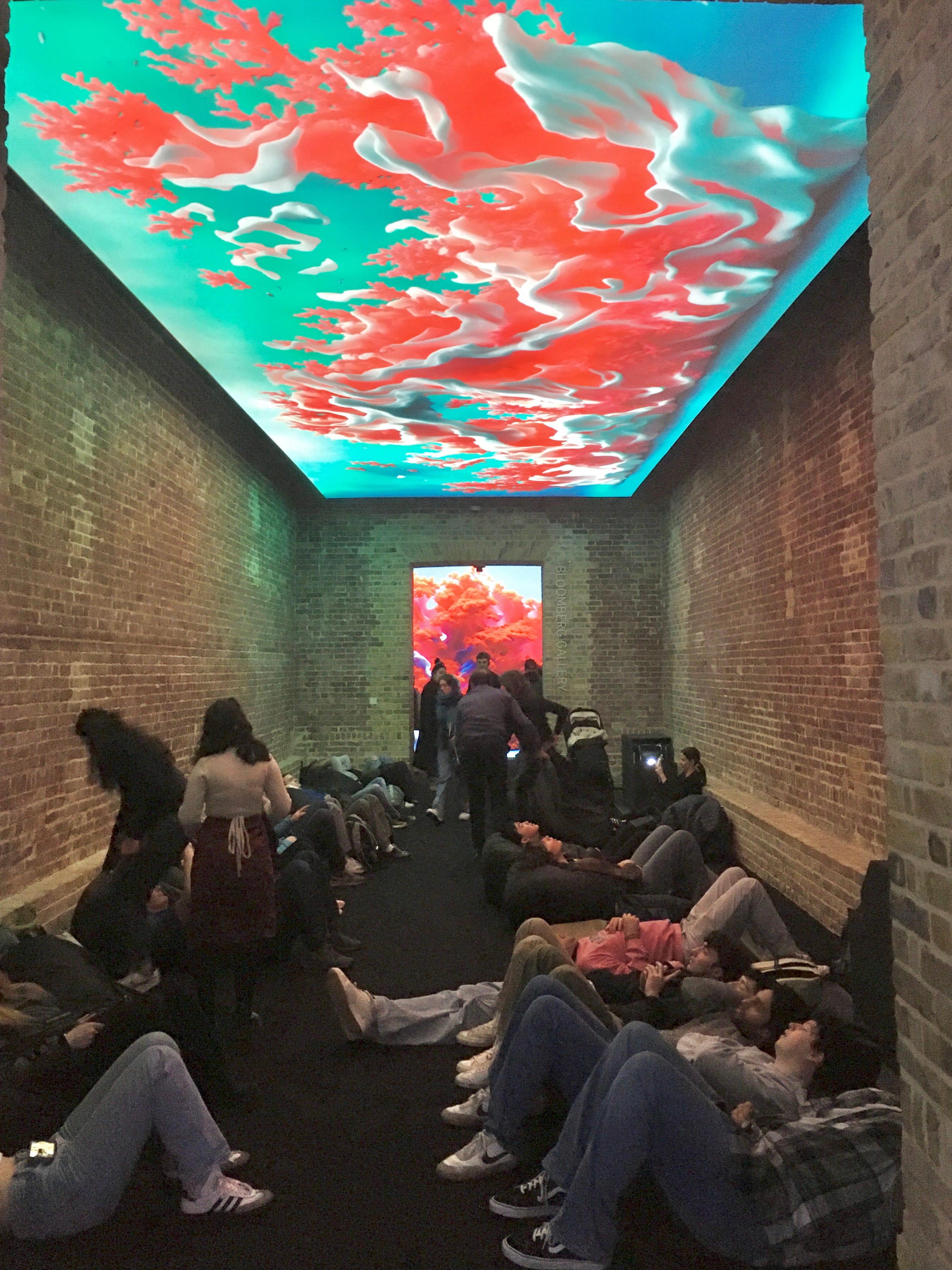London's great, take a slight diversion on a regular walk and you're bound to stumble across something unexpected and interesting. Today I spotted a free show at the Serpentine Art Gallery titled Echoes of the Earth: Living Archive and decided to stick my head in the door and see what it was all about.
A pioneer in the aesthetics of machine intelligence, artist and technologist Refik Anadol is known for his innovative media works and large-scale public installations. Echoes of the Earth: Living Archive, Anadol’s first major institutional solo exhibition in the UK, envelops viewers in immersive environments that utilise years-long experimentation with visual data of coral reefs and rainforests and showcases the creative potential of AI.
The exhibition features the UK premiere of Living Archive: Large Nature Model, a new commission adapted specially for Serpentine North. The installation wraps the gallery walls in AI generated images inspired by data of flora, fungi and fauna from over 16 rainforest locations globally, which was collected using technologies such as LiDAR and photogrammetry. At the crossroads of visual art, science, and technology, Anadol also presents Artificial Realities: Coral, a sound and video experience highlighting the vital role of coral reefs in the ocean ecosystem. Also on view is Artificial Realities: Rainforest, Anadol’s most recent project, which marks the longest continuous generative AI visualisation on nature to date. It is the first installation in a growing body of work that is created employing The Large Nature Model, the world’s first open source generative AI model dedicated to nature. Echoes of the Earth: Living Archive investigates the ways in which technology alters our perception of the natural world and our experience of time and space.
In one way it's interesting and impressive that the artist has employed technology and AI to reproduce nature's natural processes. In another, it's disappointing that the audience isn't actually out in nature learning to connect with it without the intercessory medium of a giant screen.
Can interacting with nature via giant AI generated images bring us closer to nature? Or does the message stop at the screen?
Marshall McLuhan, the great 20th century thinker had one important catchphrase that passed into popular culture: the medium is the message.
Keep reading with a 7-day free trial
Subscribe to Beautifully Broken to keep reading this post and get 7 days of free access to the full post archives.




